-
U.S. loses clean electricity as nuclear power plants keep closing
Four nuclear power plants, sources of low-emissions electricity, have announced closings this year. The main reason: the increasing availability of cheap natural gas as a result of fracking. If plants continue to shut down instead of extending operations, the United States risks losing 60 percent of its clean electricity starting in 2030, according to a new report by the American Physical Society (APS). The APS calls on socially responsible investors to encourage utilities to consider carbon emissions in business decisions.
-
-
Y-12 security breach update: Old nun awaits sentencing while costs of new Y-12 facility not to be released until 2015
On 28 July 2012, three senior citizens, led by an 83-year old nun, easily breached the supposedly impregnable security systems protecting the Y-12 National Security Complex at Oak Ridge, Tennessee. The three peace activists wondered the grounds of the maximum security facility for a while before being noticed by security personnel. While the three aging protesters are awaiting sentencing, the two companies — Bechtel Corporation and Babcock and Wilcox – which were responsible for designing and implementing security at Y-12, have been named as the primary construction contractors for planning and design of the new uranium processing facility (UPF) to be built at Y-12.
-
-
The interim agreement between the P5+1 and Iran: the details
The P5+1 countries (the United States, United Kingdom, Germany, France, Russia, and China, facilitated by the European Union) have been engaged in negotiations with Iran in an effort to reach a verifiable diplomatic resolution which would prevent Iran from obtaining a nuclear weapon. On Sunday, the P5+1 and Iran reached a set of initial understandings which halts, at least temporarily, the progress of Iran’s nuclear program and rolls it back in key respects. In return, for Iran’s concessions, and as part of this initial step, the P5+1 will provide what the agreement describes as “limited, temporary, targeted, and reversible” relief to Iran.
-
-
New drone to monitor radiation following nuclear disasters

Researchers have unveiled a large semi-autonomous drone called the ARM system which could be used to provide visual and thermal monitoring of radiation after a release of nuclear material. The system was developed in response to requirements for radiation monitoring in event of the release of radioactive materials.
-
-
DOE to resume transient testing of nuclear fuels and materials
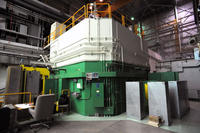
Transient testing of nuclear fuel involves placing fuel or material into the core of a nuclear reactor and subjecting it to short bursts of intense, high-power radiation in order to analyze the effects of the radiation. The Idaho National Laboratory (INL) Transient Reactor Test Facility began operating on 23 February 1959 and was a principal reactor safety testing facility in the United States for thirty-five years. The U.S. Department of Energy invites the public to read and comment on a draft environmental assessment it has prepared for a proposal to resume transient testing of nuclear fuels and materials.
-
-
Japan hopes off-shore wind turbines can replace shut-down nukes

Japan inaugurated a floating offshore wind turbine on Monday, symbolizing the country’s effort to reduce its dependency on nuclear energy and fossil fuels and shift to renewable energy sources. The floating platform is anchored thirteen miles offshore from the Fukushima Daiichi nuclear power plant, which has been out of commission since the reactor’s meltdown disasterof March 2011. The platform is anchored to the seabed 400 feet below surface. It is the first project of its kind in Japan, and it aims to show that the country can exploit the country’s powerful offshore winds to create a sustainable energy source.
-
-
Reducing volume of nuclear waste by 90 percent possible
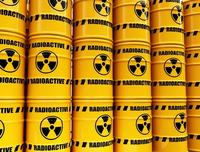
Engineers have developed a way significantly to reduce the volume of some higher activity wastes, which will reduce the cost of interim storage and final disposal. The researchers have shown that mixing plutonium-contaminated waste with blast furnace slag and turning it into glass reduces its volume by 85-95 percent. It also effectively locks in the radioactive plutonium, creating a stable end product.
-
-
“Hybrid” nuclear plants could make a dent in carbon emissions
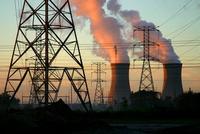
Combining nuclear with artificial geothermal, shale oil, or hydrogen production could help slow climate change, study shows. MIT’s Charles Forsberg proposes marrying a nuclear powerplant with another energy system, which he argues could add up to much more than the sum of its parts.
-
-
China buys Implant Sciences explosives detectors to protect nuclear power plants
Implant Sciences has sold multiple units of its QS-H150 handheld explosives trace detectors to a customer in China, who will be deploy them across several locations for the purpose of protecting nuclear power plants in multi-layered security environments.
-
-
Leading climate scientists urge support for nuclear power
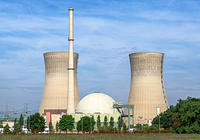
Four of the world’s leading climate scientists have urged environmentalists to support the continuing development of nuclear power as one of the ways to reduce fossil fuel pollution, saying wind and solar energy will not be enough to head off dangerous acceleration of global warming. This is an important point because environmentalists agree that global warming is a threat to ecosystems and humans, but many of the same environmentalists oppose nuclear power, arguing that new forms of renewable energy will be sufficient to meet the world’s need for power within the next few decades.
-
-
Where should U.S. radioactive waste be buried?
In the United States, about 70,000 metric tons of spent commercial nuclear fuel are located at more than seventy sites in thirty-five states. Shales and other clay-rich (argillaceous) rocks have never been seriously considered for holding America’s spent nuclear fuel, but it is different overseas. France, Switzerland, and Belgium are planning to put waste in tunnels mined out of shale formations, and Canada, Japan, and the United Kingdom are evaluating the idea.
-
-
Russia to build floating nuclear power plants

Global warming is opening the Arctic Ocean to shipping – and causing the rapid melting of Arctic ice. Russia says that ship-based nuclear power plants would allow it to provide power to remote cities in Siberia, and provide power to oil and gas drilling operations in the Arctic (about 30 percent of the world’s unclaimed natural gas is in the Arctic, and about, 60 percent of that unclaimed natural gas is in the Russian Arctic). Experts worry about the ability of ship-based nuclear reactor to withstand extreme weather events, or terrorist attacks. The U.S. Army deployed its own floating nuclear reactor – the Sturgis – in the Panama Canal Zone from 1968 to 1976.
-
-
Nuclear fuel withstands accident conditions’ high-temperature
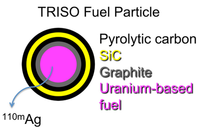
A safer and more efficient nuclear fuel is on the horizon. A team of researchers have reached a new milestone with tristructural-isotropic (TRISO) fuel, showing that this fourth-generation reactor fuel might be even more robust than previously thought. Byproducts of the fission process have the potential to escape the fuel, especially at very high temperatures. Controlled, high-temperature testing of irradiated TRISO) fuel demonstrated that fission product release remains relatively low at high temperatures postulated to occur in accidents and beyond.
-
-
Sharp increase in radioactive water leaks at Fukushima
Tokyo Electric Power(TEPCO) has reported a rise in groundwater radiation levels, saying a tank at the firm’s Fukushima plant leaked 300 metric tons of toxic water in August 2013. Water samples from wells, taken in mid-October, show a record-high concentration of beta-ray emitting substances, and a sharp increase in the presence of radioactive tritium. Japanese prime ministerShinzo Abe, in a tacit admission that Japan cannot effectively handle the continuing radiation leaks from the stricken plant, said Japan would be interested in receiving foreign help to contain widening radioactive water leaks at Fukushima.
-
-
U.S. first nuke in thirty years mired in costly legal wrangling
The U.S. first nuclear construction project in thirty years is the center of a $900 million lawsuit pitting Westinghouse Electric Co. against Georgia Power. The $14 billion project is about twenty months behind schedule and $900 million over budget, and each side blames the other for the delays and cost overruns.
-
More headlines
The long view
Smaller Nuclear Reactors Spark Renewed Interest in a Once-Shunned Energy Source
In the past two years, half the states have taken action to promote nuclear power, from creating nuclear task forces to integrating nuclear into long-term energy plans.
Keeping the Lights on with Nuclear Waste: Radiochemistry Transforms Nuclear Waste into Strategic Materials
How UNLV radiochemistry is pioneering the future of energy in the Southwest by salvaging strategic materials from nuclear dumps –and making it safe.
Model Predicts Long-Term Effects of Nuclear Waste on Underground Disposal Systems
The simulations matched results from an underground lab experiment in Switzerland, suggesting modeling could be used to validate the safety of nuclear disposal sites.
